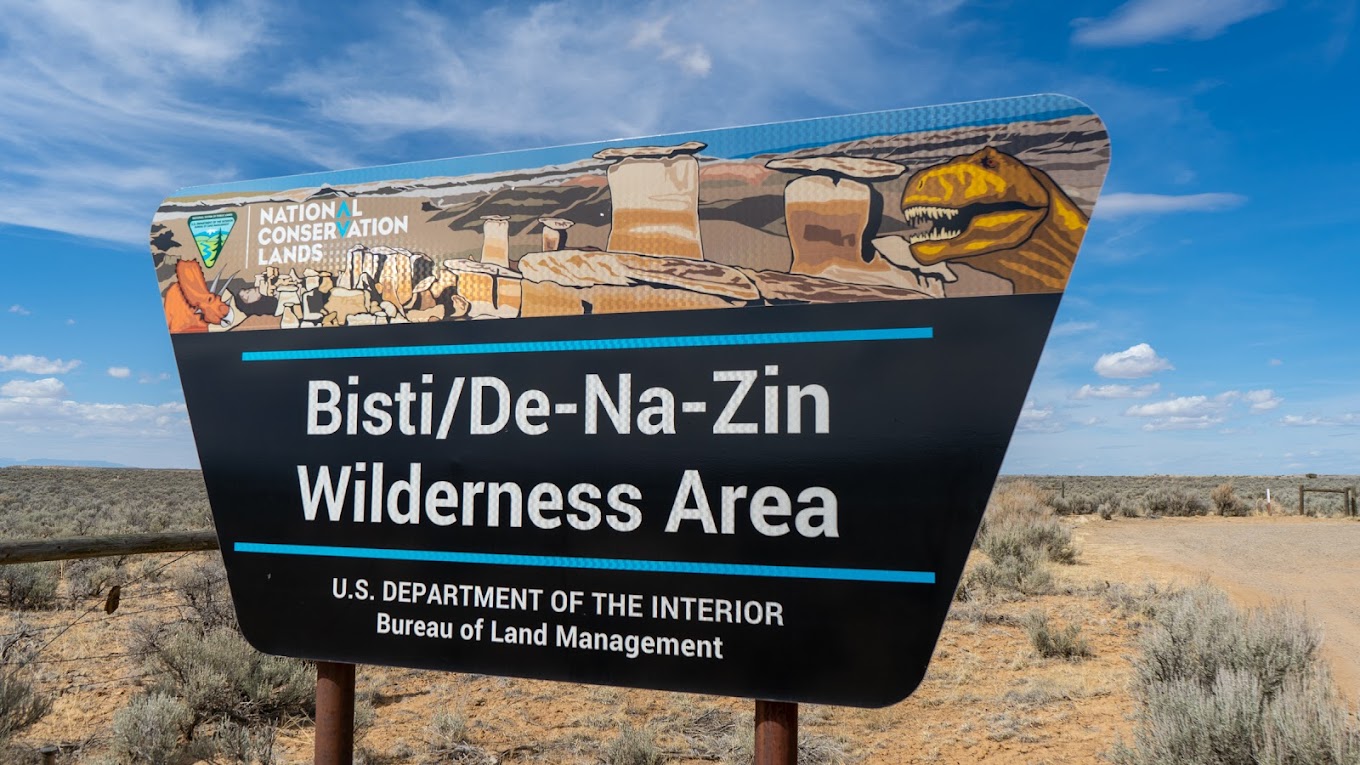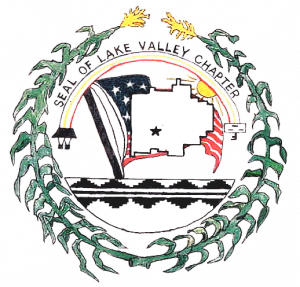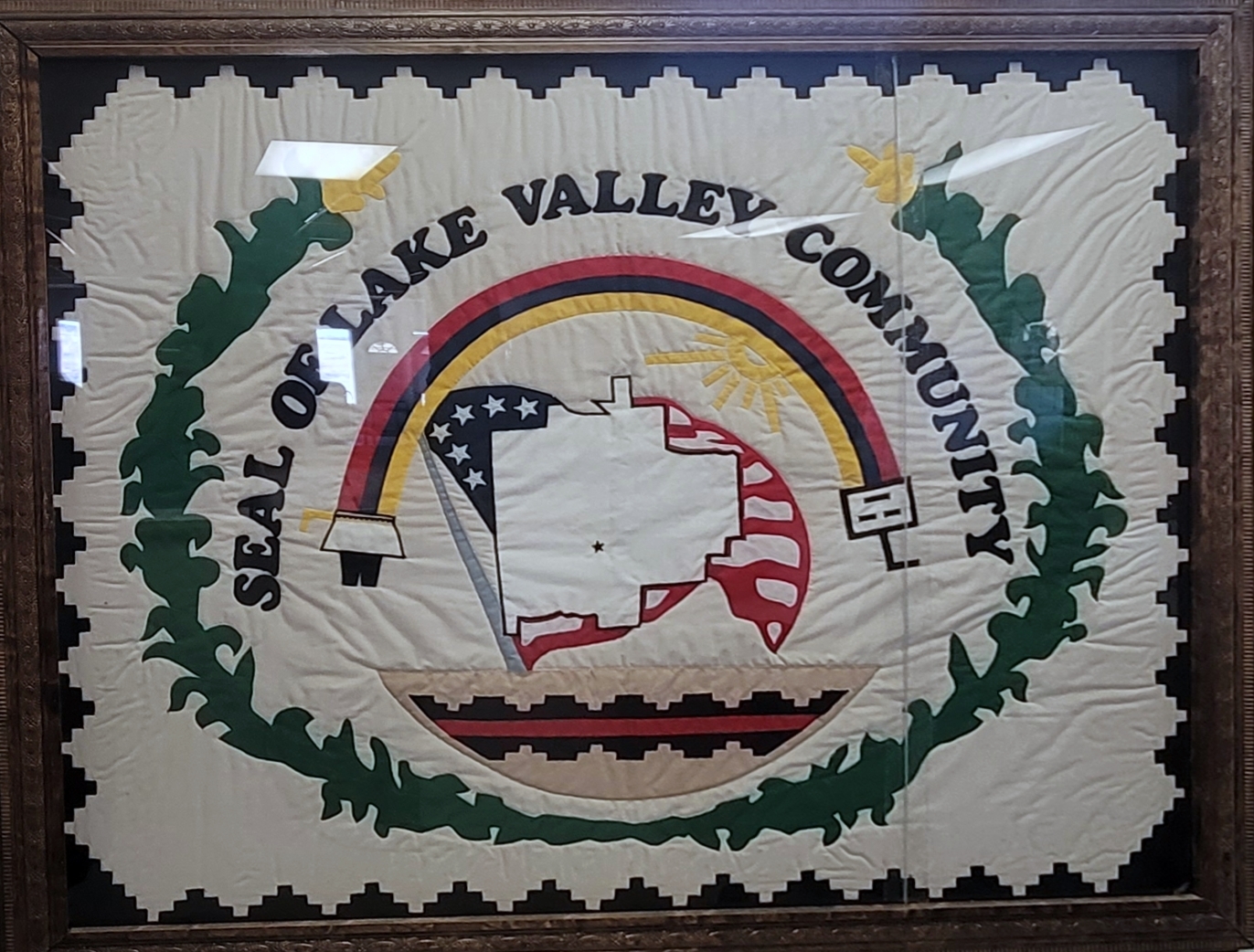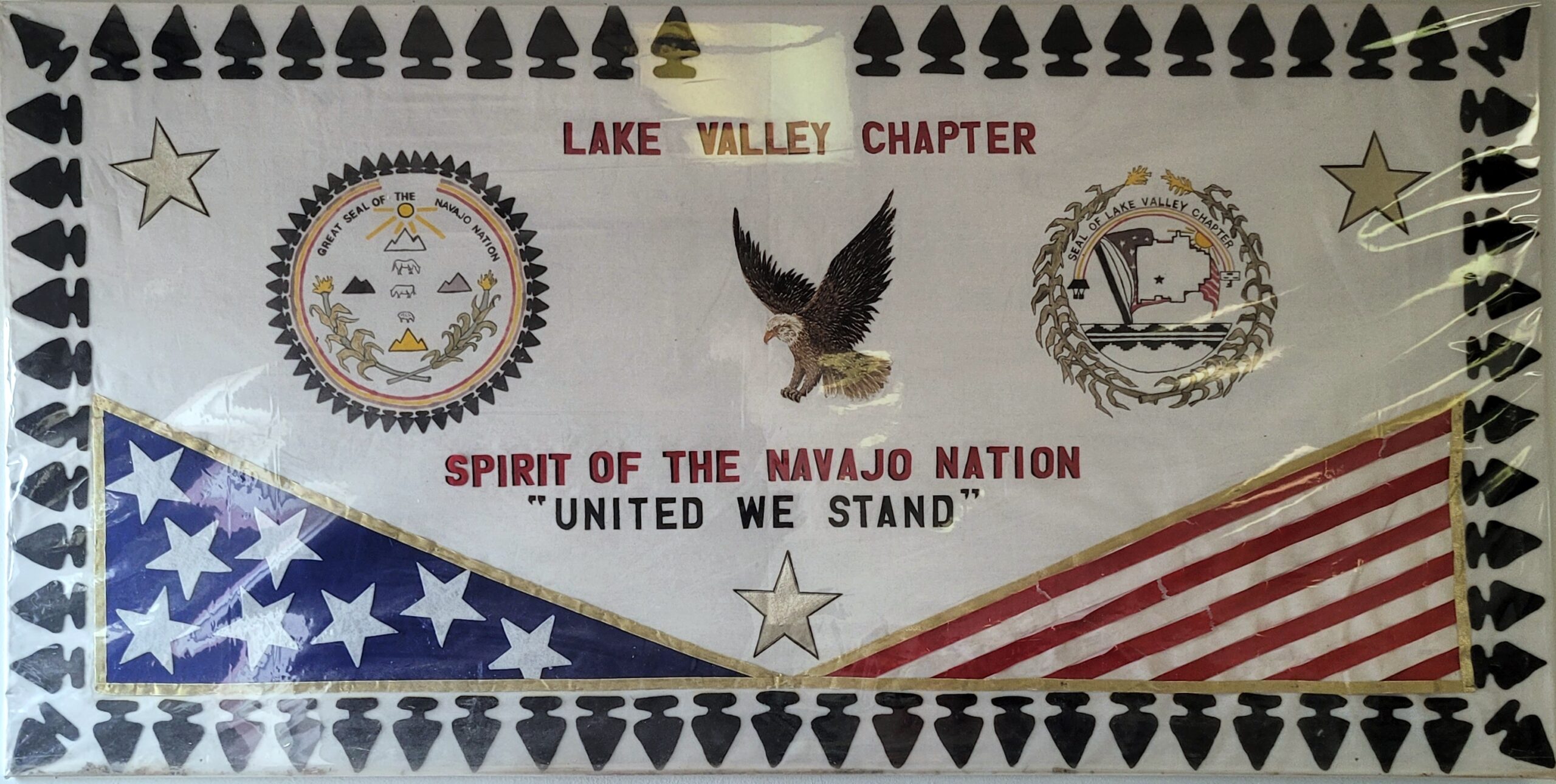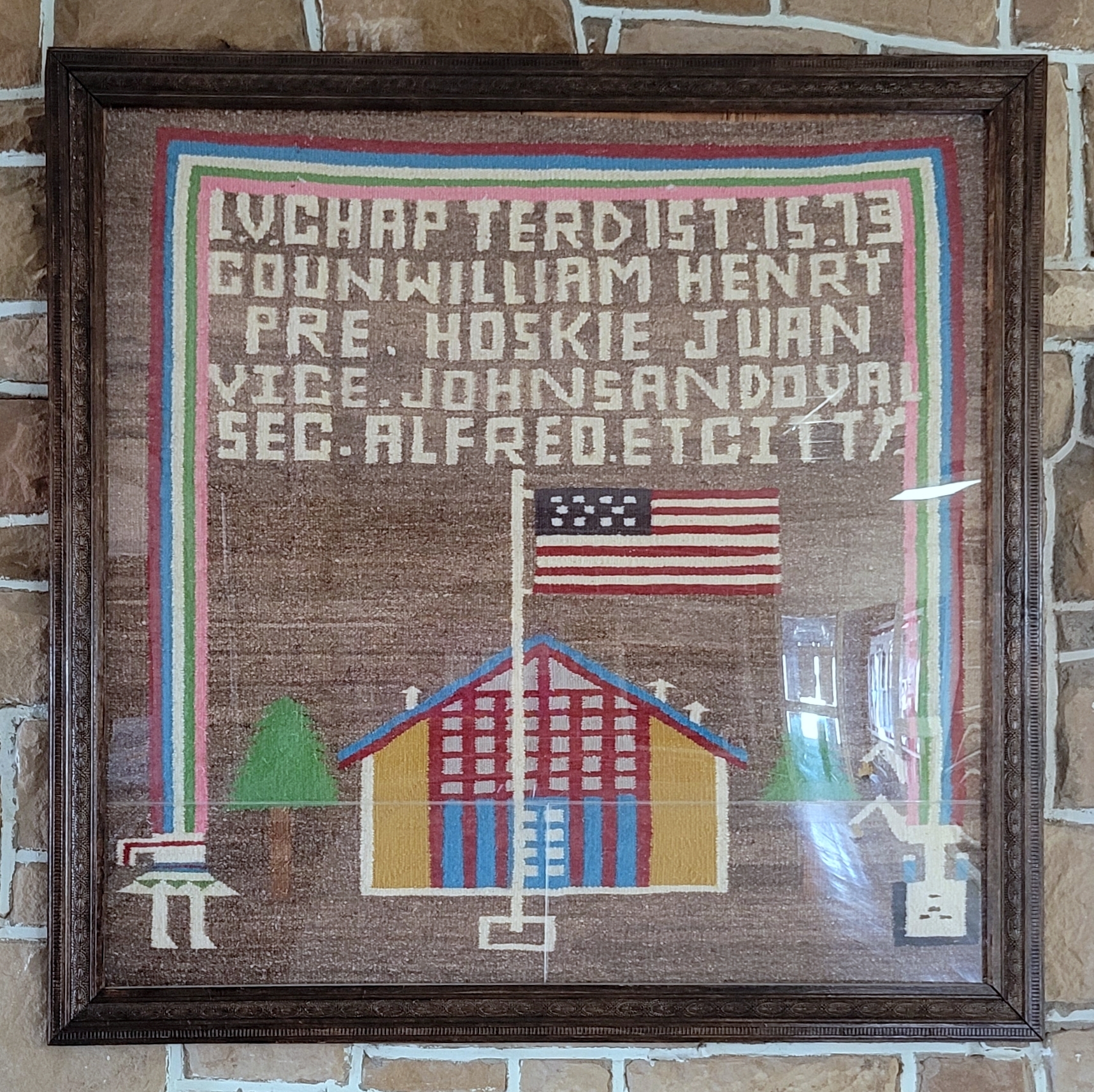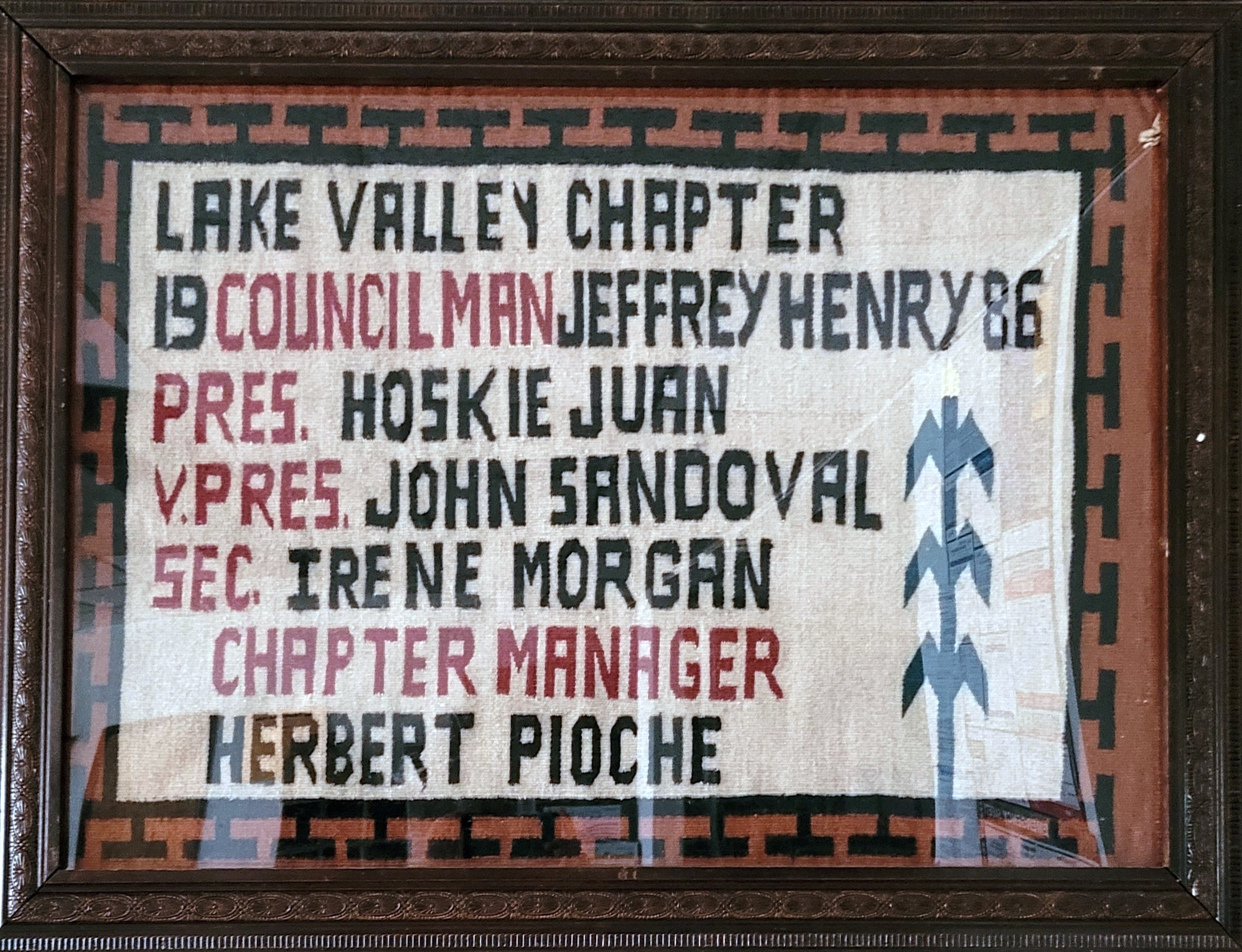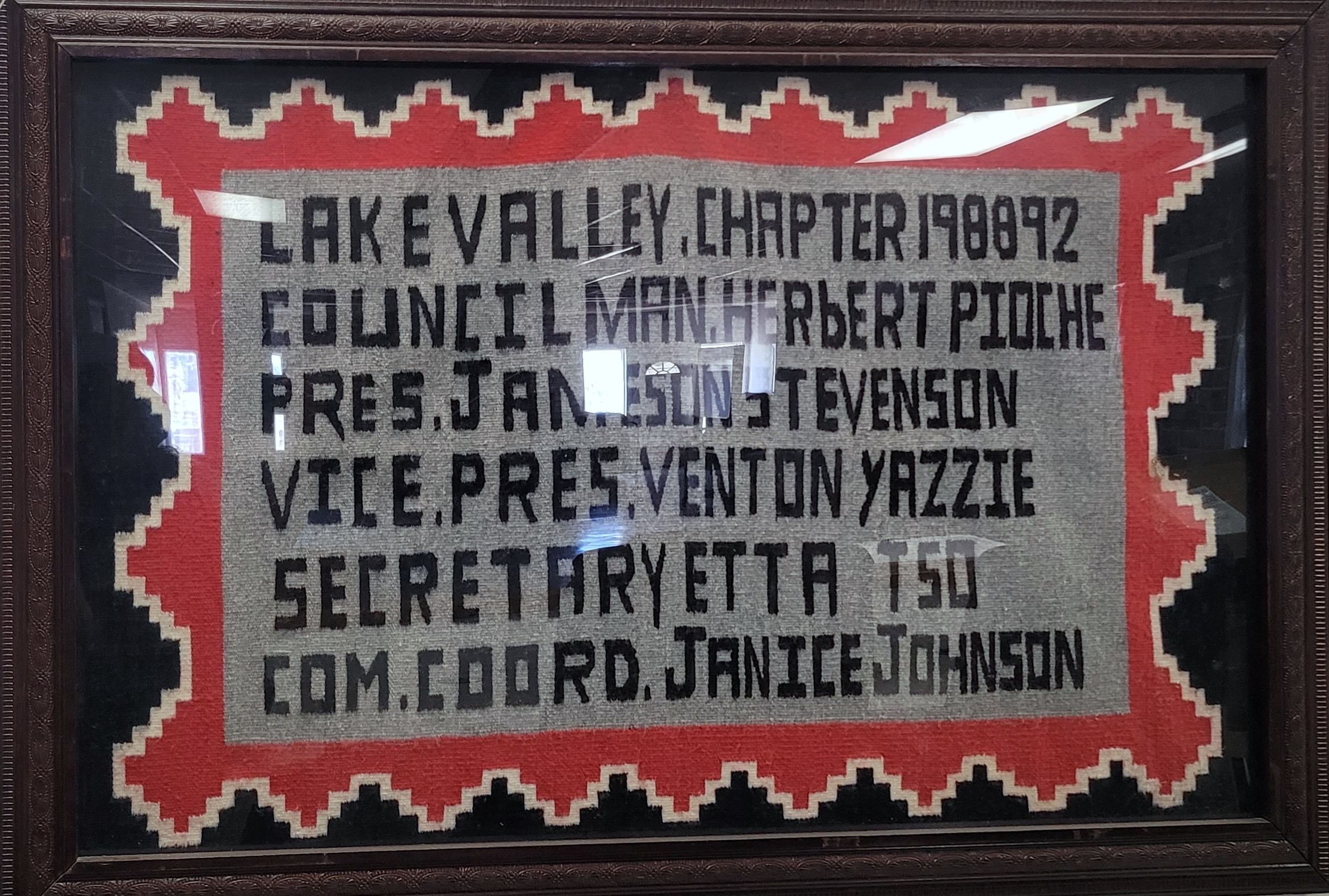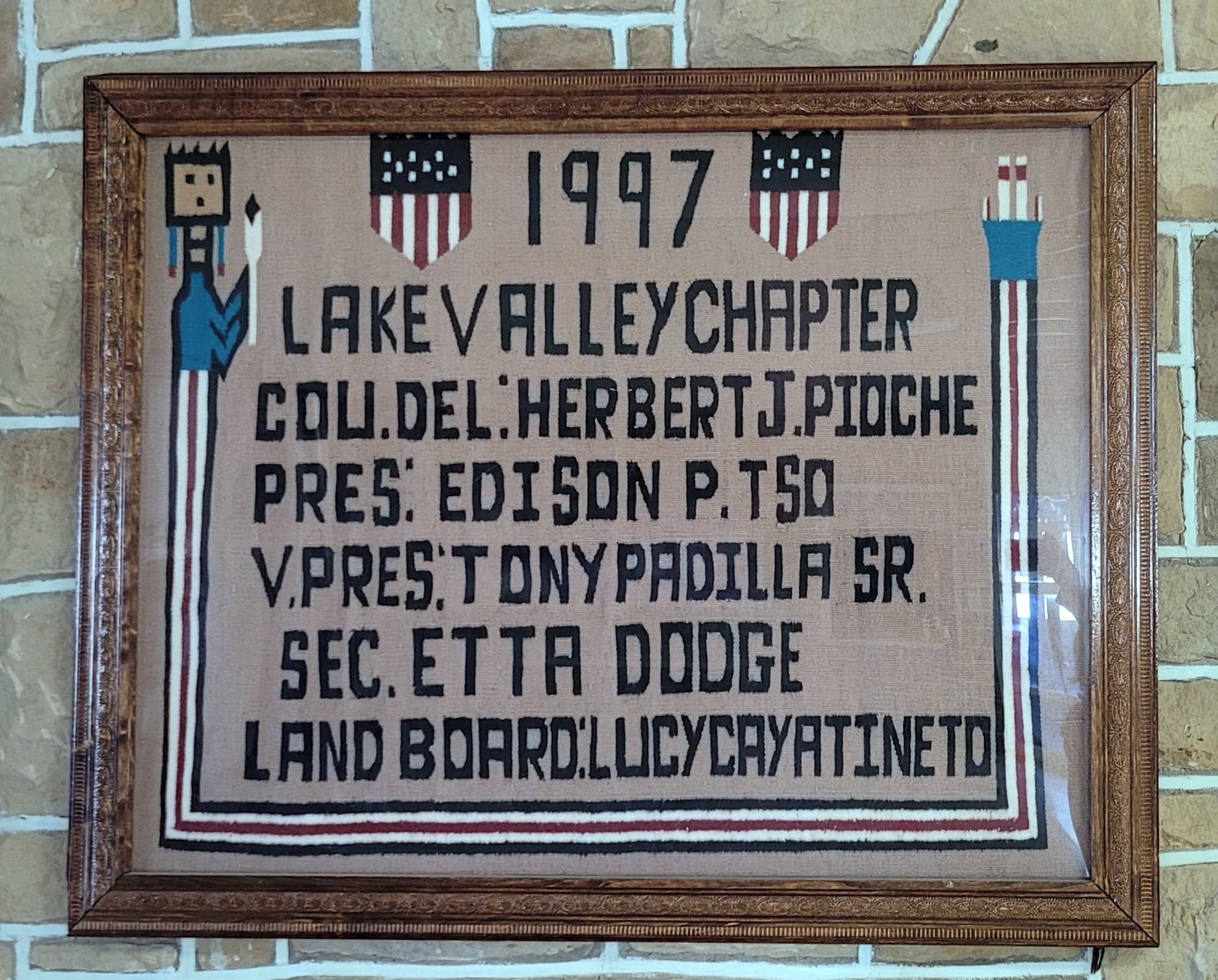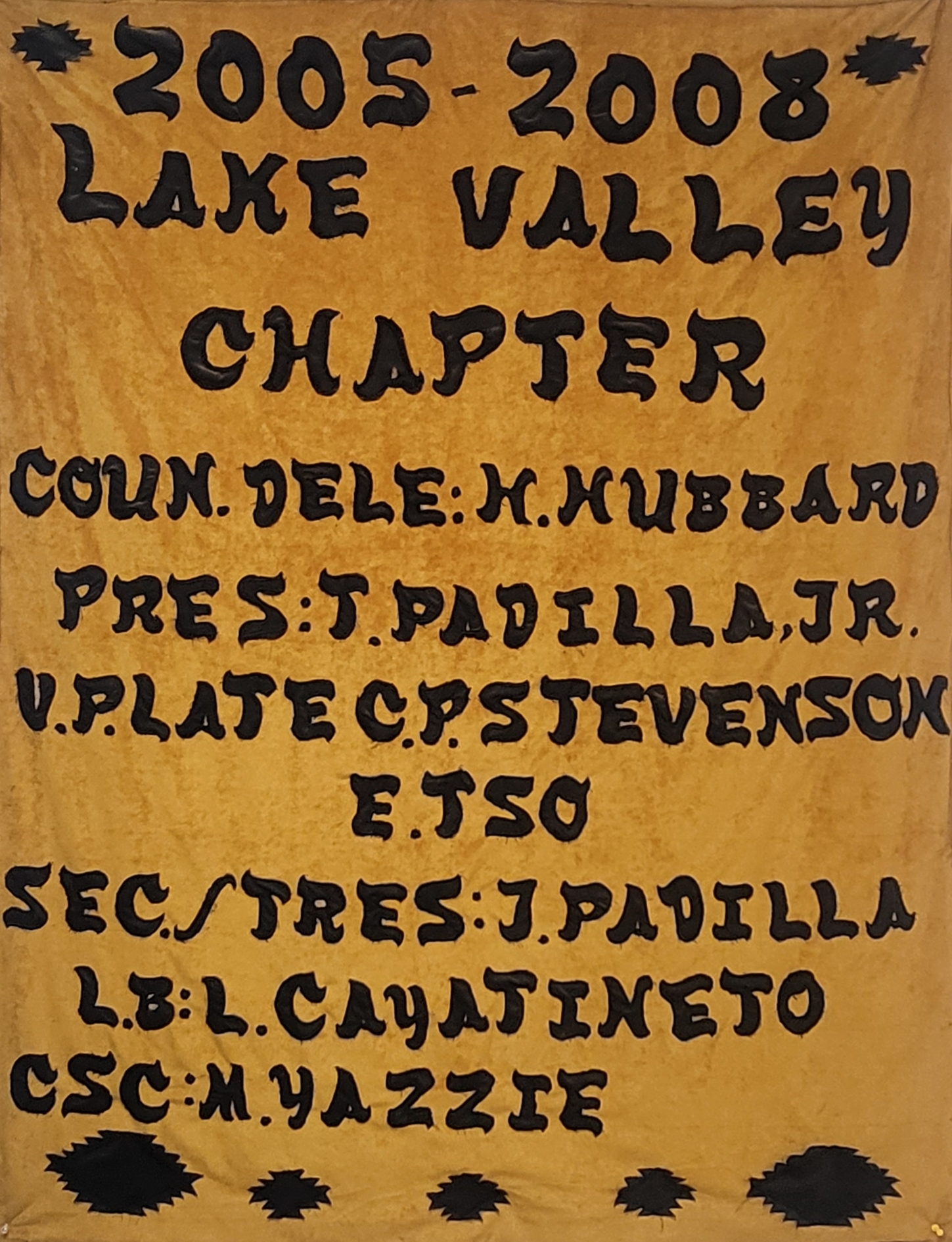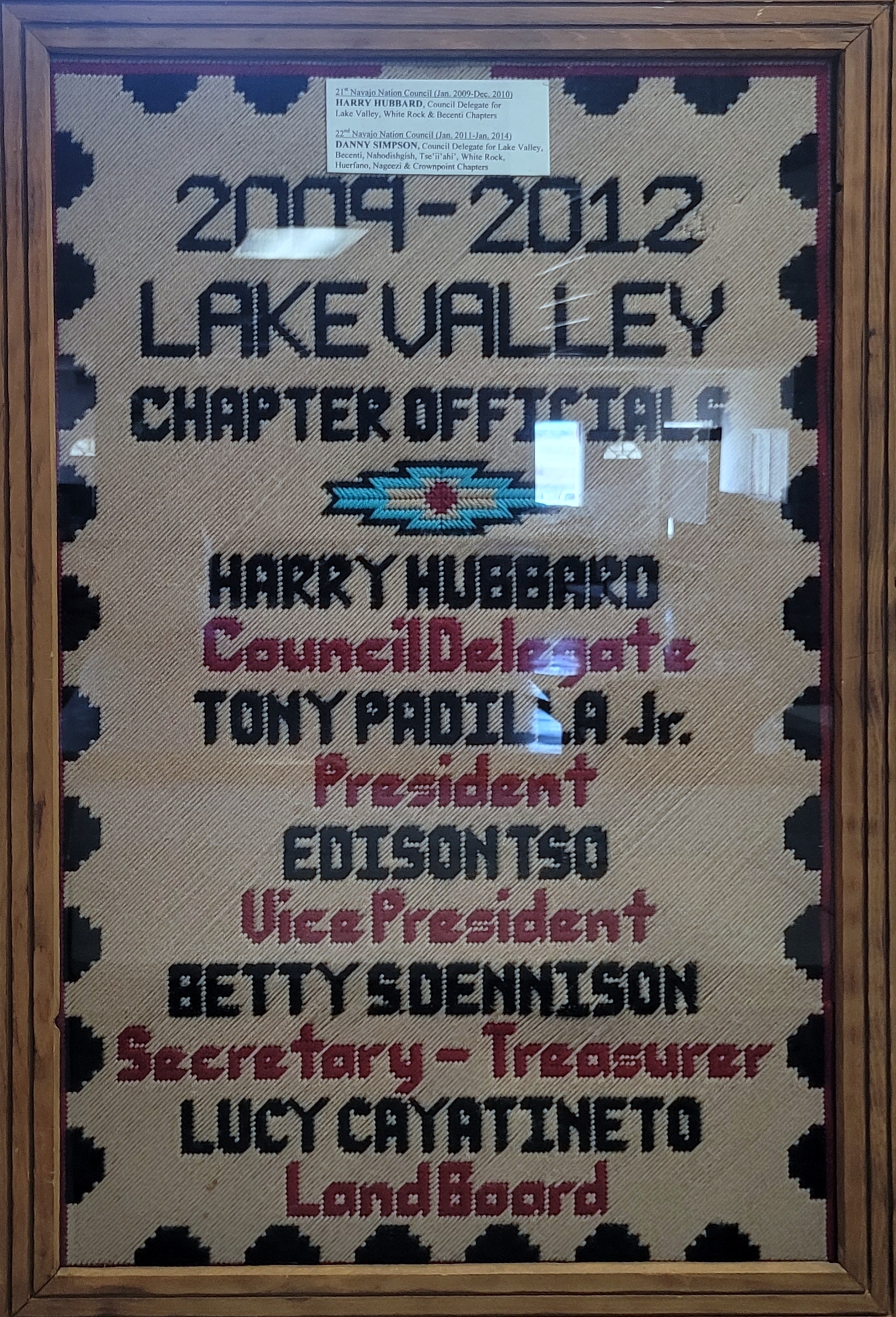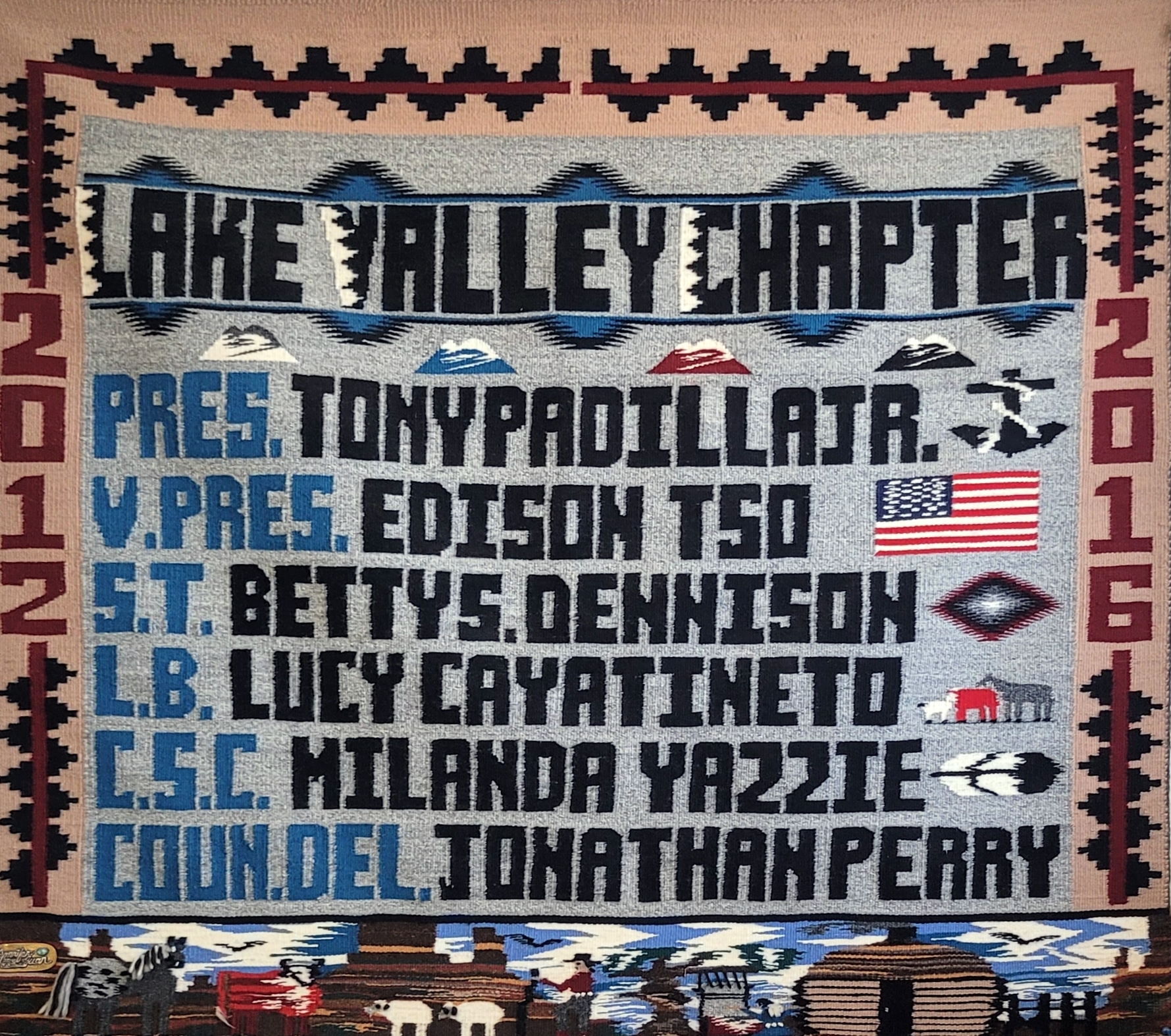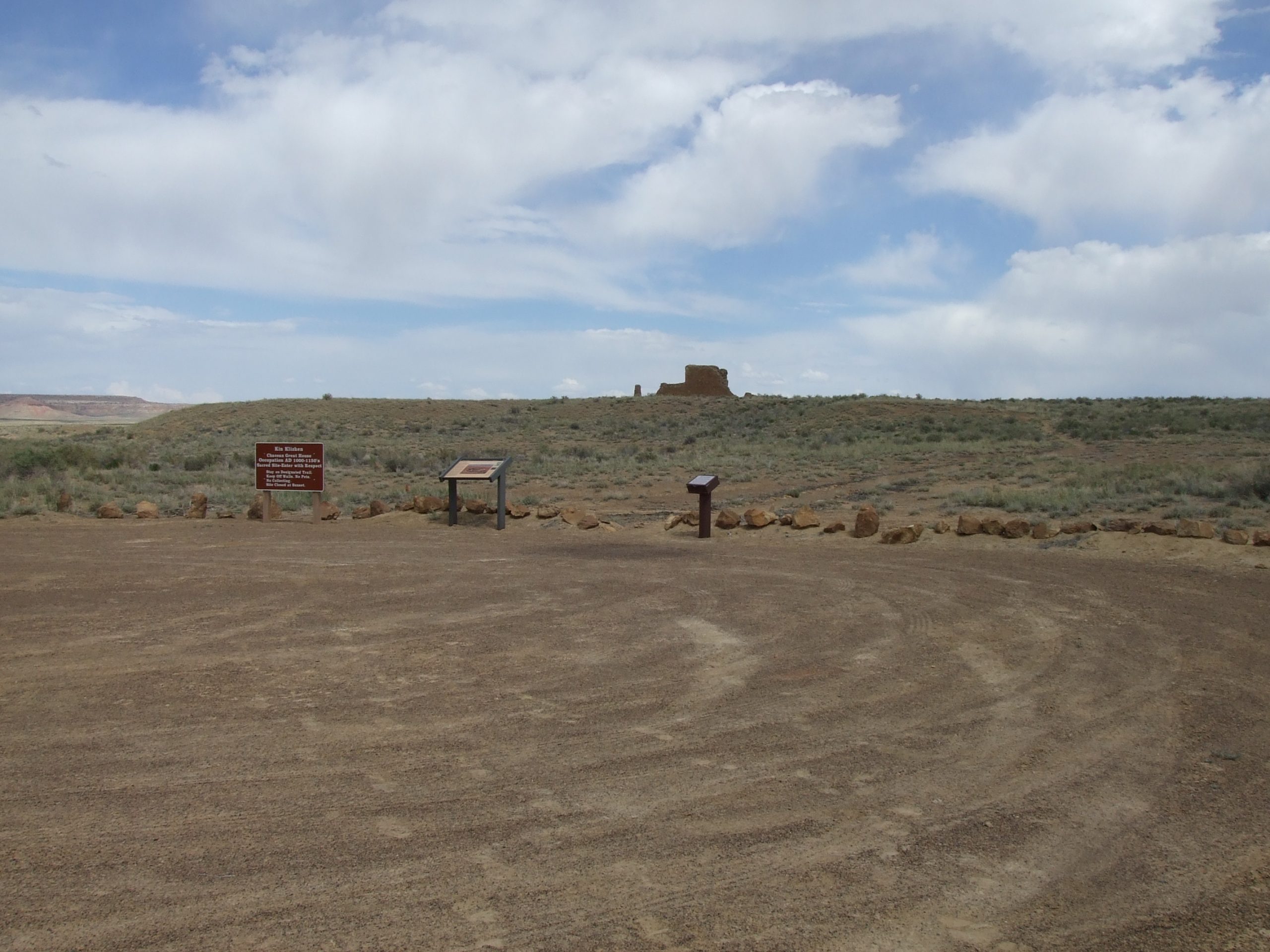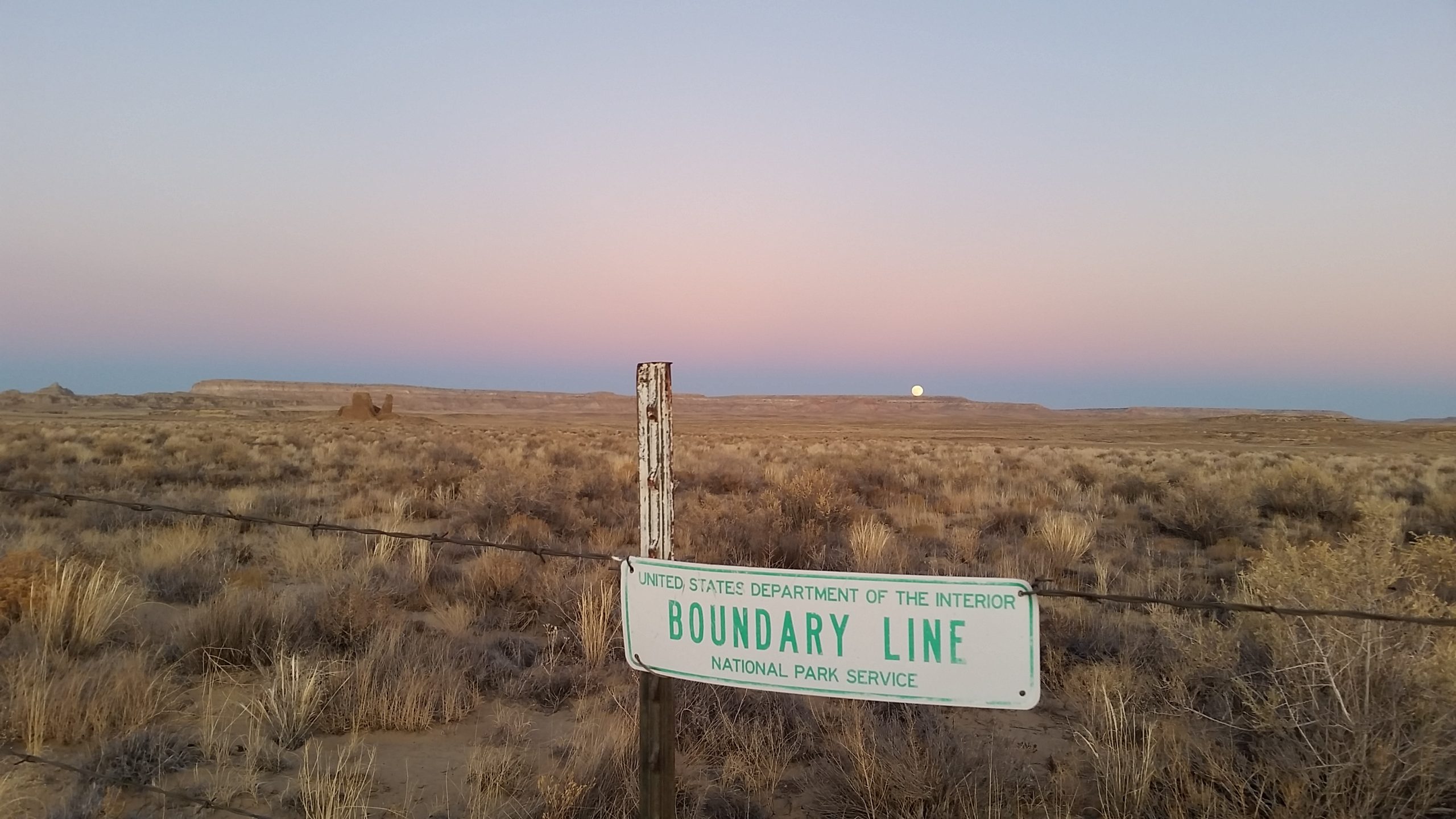LAKE VALLEY COMMUNITY
HISTORY of BE’ÁK’EHALGAII (lake valley)
“A long time ago there was no lake in this area, which is now called Lake Valley. Then in the 1930’s a dam was built, and the lake was formed. Some of the people who started working on the ditches and building the dam were: Old Man Succo, Henry Succo, Sam Henry, Etcitty Juan, and Bit’ahnii Yazhi. These men worked on the dame for many days. They brought their own bedrolls, food, wagons, scrapers, plows, and seed to be planted. They started off with ten to fifteen teams of horses in order to build the ditch about half of mile or a mile on the south side of what is now Lake Valley. The ditch ran all the way down on the west side of the Lake Valley Chapter House. After the dam was built, the passage of water led into a lake. This is how the place was named Lake Valley.”
“[The] oral history booklet was produced by and contains the stories of the people of the Lake Valley and Whiterock Navajo communities. Both communities are joined side by side at the west end of Chaco Canyon. The major ruins of the Anasazi are less than ten miles from the Lake Valley School.”
“Both Chapters helped each other in building the Lake Valley School.” In the early 1920s, both communities came together to start discussing the location of the school and with extensive discussion; everyone agreed upon the present site of Lake Valley Navajo School. “The first building was built in 1935 out of stones from the area and consisted of three or four classrooms, a dormitory, and a kitchen – these three rooms were all in one building.”
-Community Members, Lake Valley & Whiterock. An Oral History of the Lake Valley and Whiterock Communities Be’ak’id Halgaii Doo Tselgaii Baa Hane’. 1981. translated by Juan Etcitty, edited by Patty Chee, 1st ed., vol. 1, Grant from the U.S. Office of Education, Department of Health, Education and Welfare, 1981.
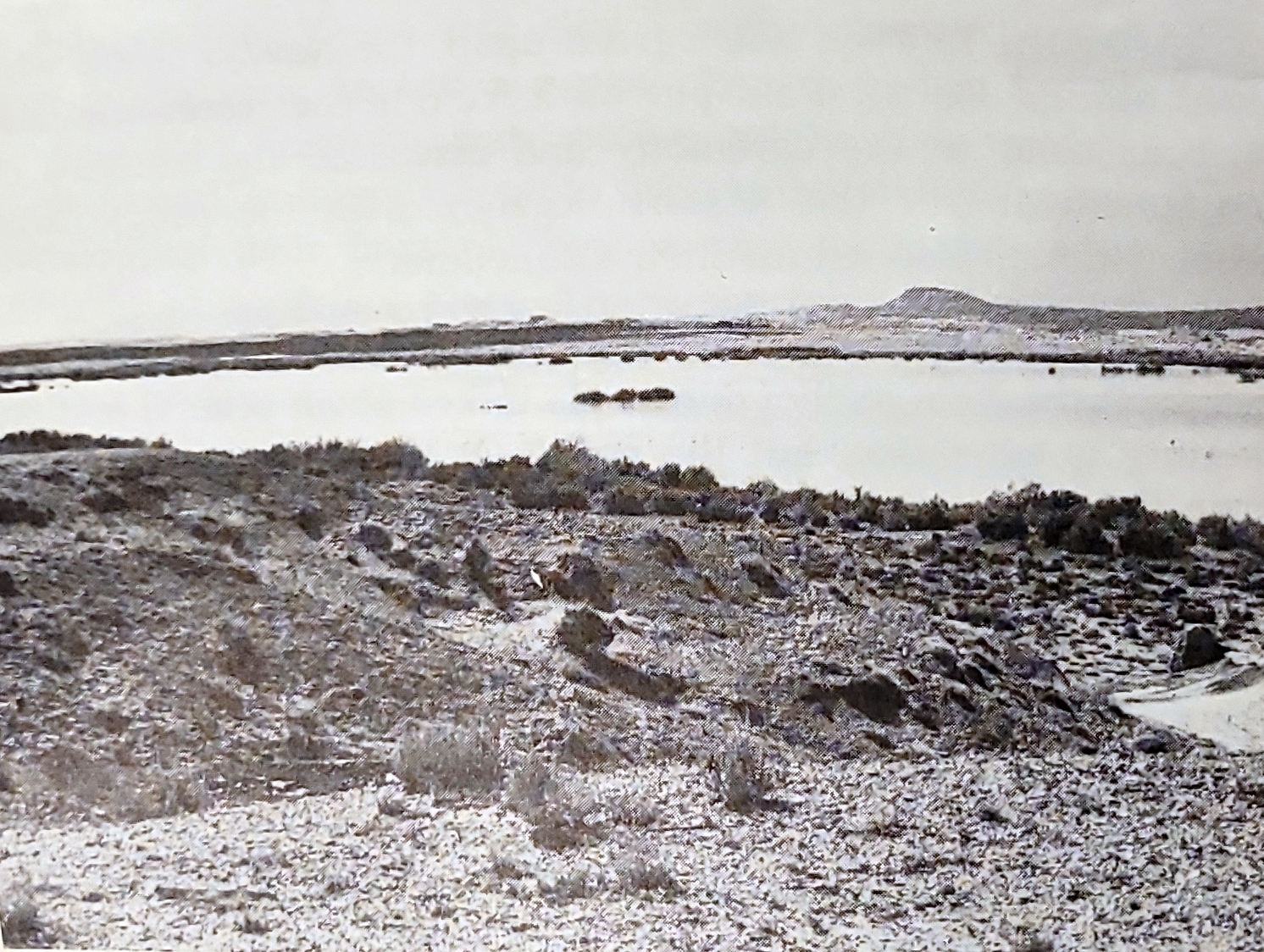
Image from An Oral History of the Lake Valley and Whiterock Communities Be’ak’id Halgaii Doo Tselgaii Baa Hane’
Memorabilia were made by Community Elders as a Senior Center Project.
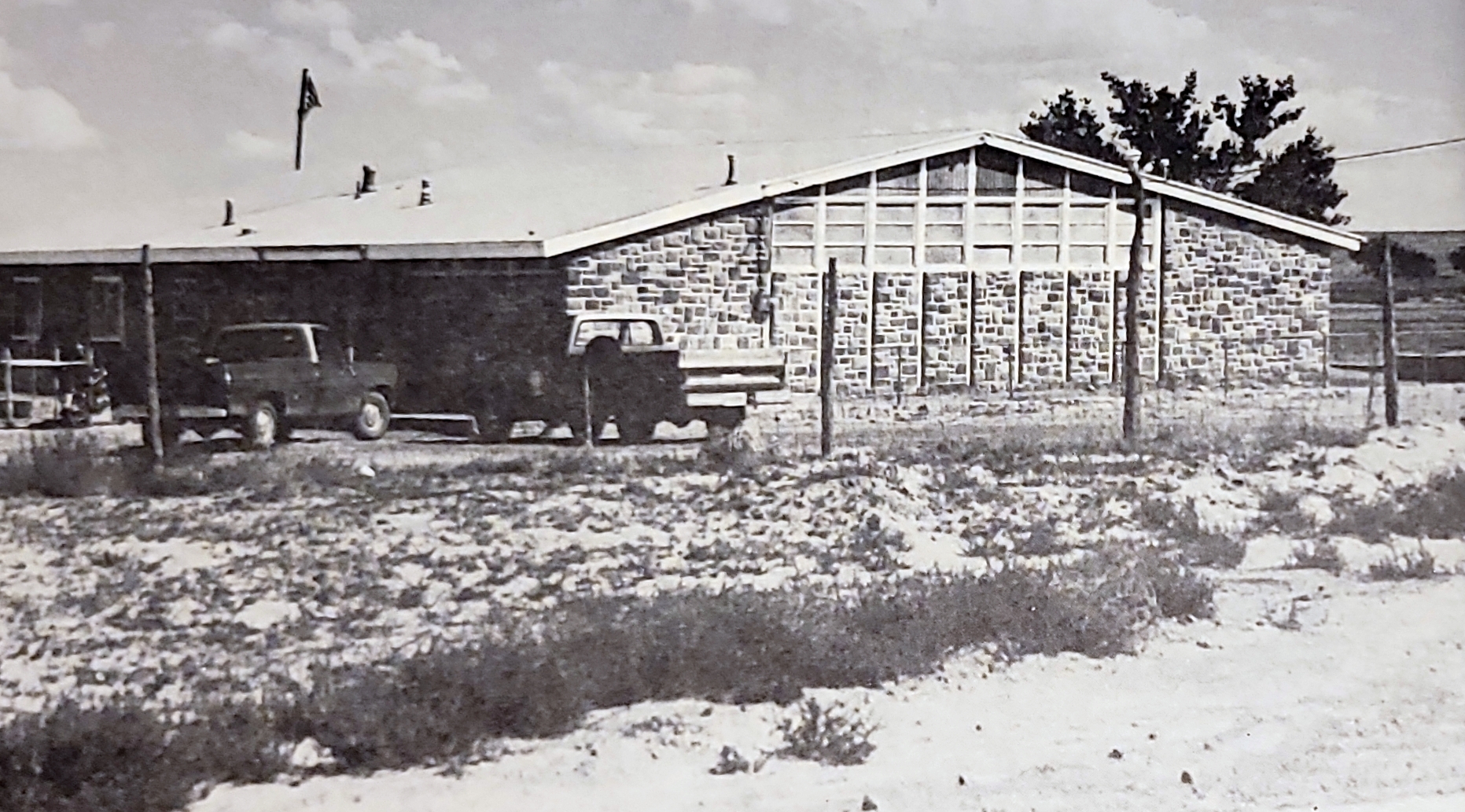
Image from An Oral History of the Lake Valley and Whiterock Communities Be’ak’id Halgaii Doo Tselgaii Baa Hane’
HISTORY of lake valley chapter house
The Lake Valley Chapter used to conduct their meetings at the first building of Lake Valley School and a stoned house south of Lake Valley School from 1935 to the construction of the present Lake Valley Chapter House.
“In about 1935 the Chapter Officers worked without pay. They would go to the different homes, traveling on horseback, announcing meetings, or asking people to help each other in various ways, such as building hogans or houses, or helping others to plant crops – those who said they would help would bring their lunches.”
“There was no election process in those days for Councilman for any of the Chapters.” The Councilman “made a decision to represent [their] people in the area – The Council meetings would take place either in Crownpoint or in Window Rock. The Councilmen were expected to use money out of their pockets for transportation, since they didn’t get paid at that time.”
“About 50 to 55 years ago [from 1981] the Navajo Police would ride on horseback. They would travel to the different homes and tell people where to take their sheep and goats to be dipped. [They would also informed the residents of both communities about any important event taking place]. Announcements were also made by Officials at Squaw Dances or Ye’iibicheii dances, so that people would know what was going on.”
Community Members, Lake Valley & Whiterock. An Oral History of the Lake Valley and Whiterock Communities Be’ak’id Halgaii Doo Tselgaii Baa Hane’. 1981. translated by Juan Etcitty, edited by Patty Chee, 1st ed., vol. 1, Grant from the U.S. Office of Education, Department of Health, Education and Welfare, 1981.
Lake Valley Chapter was officially certified on February 14, 1956 that gave the authority and responsibility to address and act on the needs/concerns of its community.
The Lake Valley Chapter is on the north central portion of the Eastern Agency and shares its borders with the Nageezi; Becenti; Whiterock; and Huerfano Chapters. The Lake Valley Chapter has approximately 83,573 acres of land and is in the “Checkerboard” land area. The Chapter has portions of Tribal Trust, Tribal Fee, Indian Allotment, State Leased, Private Leased, Public Domain, BLM Leased, and National Park Service Land.
MORE HISTORY COMING SOON…
RUGS WERE MADE BY LOCAL WEAVERS AND STILL ARE HANGING INSIDE THE CHAPTER TODAY, 2023.
Page 85 from Navajo Elections, Navajo NSN. “Chapter Officials from 1955 to Present.” Chapter History, 30 Jan. 2017, navajoelections.navajo-nsn.gov/History. Accessed 17 Jan. 2023.
Page 11 from Community Members, Lake Valley & Whiterock. An Oral History of the Lake Valley and Whiterock Communities Be’ak’id Halgaii Doo Tselgaii Baa Hane’. 1981. translated by Juan Etcitty, edited by Patty Chee, 1st ed., vol. 1, Grant from the U.S. Office of Education, Department of Health, Education and Welfare, 1981.
LOCAL SERVICES
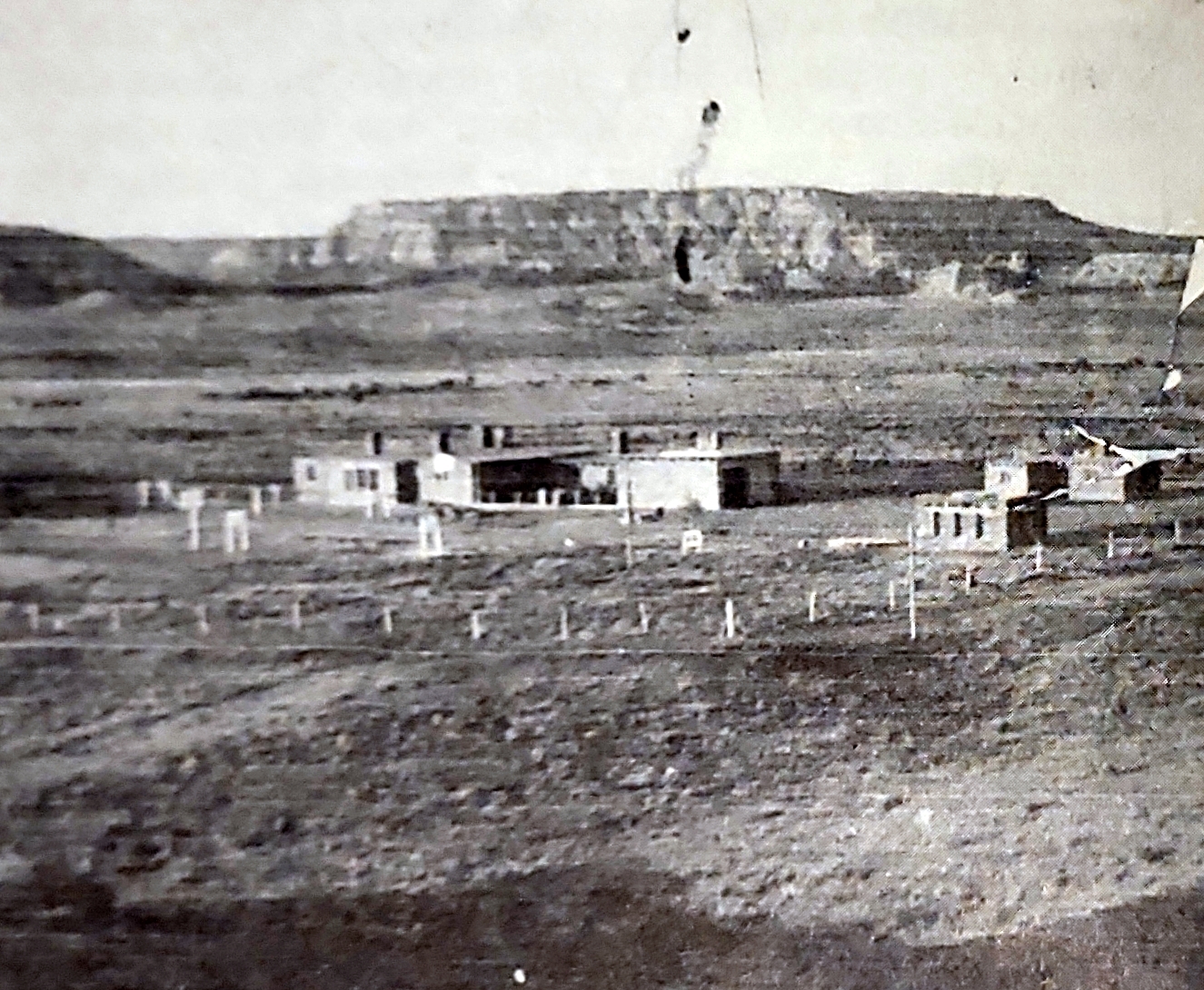
LAKE VALLEY NAVAJO SCHOOL
Provides a K-8 school, cafeteria, dormitory, library, and Dave Atanasoff’s Gymnasium.
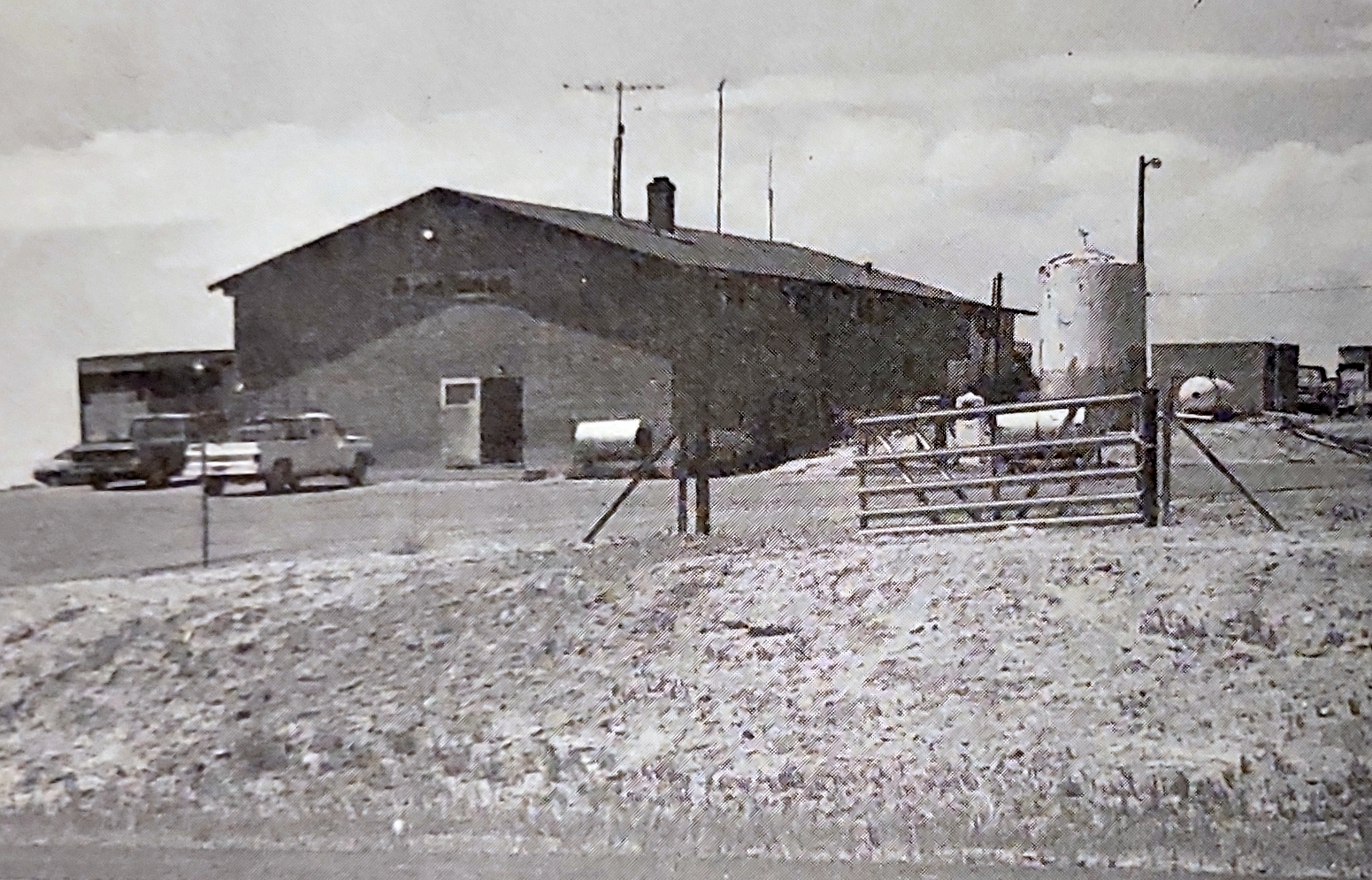
TSAYA TRADING POST
Mr. Kaye Ashcroft’s father came to the area in December 1939 and in 1941 he bought the Whiterock store. Kaye Ashcroft built the current building around 1960 after closing up the old Whiterock store and the old Tsaya store. Mr. Ross Ashcroft, son of Kaye, now operates the Trading Post.
OPEN Monday – Friday 8am-6pm
OPEN Saturday 8am – 2pm
CLOSED on Sunday
Provides gasoline, diesel, propane, grocery, repair materials, personal products, DVD rental, mailbox, Pendleton items, & tire maintenance.
Coming soon more history of Tsaya.

LA VIDA MISSION
Provides a K-12 school, church, outreach center, cafeteria, and community services.

LAKE VALLEY DUMP STATION
The convenience station is maintained and operated by the San Juan County.
Open ONLY on Saturday
9am-5pm.
NEARBY TOURISM
